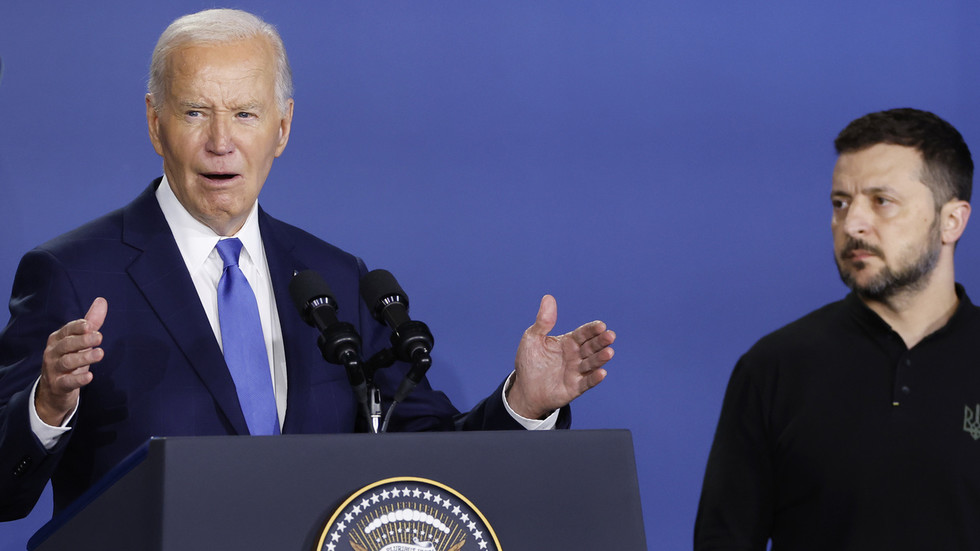The US Defense Department has expressed its unwavering commitment to continue supplying military aid to Ukraine until the final moments of President Joe Biden’s administration. Spokesperson Sabrina Singh outlined the urgency behind this commitment, as officials are concerned that the incoming administration under President-elect Donald Trump might choose to halt the flow of assistance altogether. Reports indicate that the Pentagon is working rapidly to utilize the remaining funds authorized for military supplies in a bid to complete arms shipments as swiftly as possible, given the potential for bureaucratic delays associated with transitioning to a new administration. This strategy reflects a sense of urgency aimed at ensuring that Ukraine receives necessary support in its ongoing conflict with Russia, an issue of vital concern for US foreign policy.
While the Defense Department has a variety of arms ready for dispatch, some items are reported as currently out of stock or expected to take longer for delivery. However, Singh has assured that the Pentagon maintains an expectation that Trump won’t obstruct in-progress shipments authorized by the Biden administration. The spokesman emphasized that the Pentagon can facilitate around $4 billion in arms through the Presidential Drawdown Authority (PDA) and an additional $2 billion through the Ukraine Security Assistance Initiative (USAI). Singh characterized the packages sent under these authorities as flexible in timing, noting that some can arrive in a matter of days while others will require a longer lead time depending on current inventory levels.
The ongoing provision of aid to Ukraine has been extensive, with the US Congress approving over $174 billion in military and humanitarian assistance since the onset of the conflict in February 2022. This immense financial commitment underscores the US’s strategic objective to bolster Ukraine against Russian aggression. Despite potential policy shifts anticipated with Trump’s return to office, he has not articulated clear intentions regarding the future of US military support for Ukraine. This uncertainty raises questions about how American foreign policy towards Ukraine might adapt should Trump revise the current stance, particularly considering his previous statements regarding the feasibility of negotiating a swift resolution to the conflict.
Trump’s campaign rhetoric has suggested a critical view of the current Ukrainian leadership, encapsulating his disdain for President Zelensky by branding him as a “greatest salesman in history.” This disparagement hints at an underlying skepticism about the Ukrainian government’s efficacy in translating international support into tangible military success. Trump’s claims that he could resolve the conflict within a day if re-elected reflect a controversial perspective that starkly contrasts with the sustained commitment shown by the Biden administration. As Trump takes a more direct approach in critiquing how military aid is utilized by Ukraine, debates about strategy and accountability in foreign military assistance are likely to emerge as focal points throughout his administration.
Moreover, Singh’s remarks indicate a level of operational readiness within the Pentagon, emphasizing that logistical preparations are ongoing to ensure that military aid continuity can be achieved without significant gaps in the support being given to Ukraine. While she refrained from specifics concerning stockpiles, her assertion that replenishment efforts are constantly in motion reflects confidence in the Defense Department’s capacity to respond to Ukraine’s evolving needs amidst fluctuating political landscapes. The impending transfer and use of aid resonate with a broader narrative that reflects the gravity of military engagements, intertwining international relations and domestic policy considerations.
Ultimately, the future of US military support for Ukraine hangs in the balance as the political transition takes place, not only reflecting the ideological divisions within American politics but also highlighting the complexities involved in foreign policy during times of conflict. As the Biden administration prepares to finalize its commitments, unanswered questions remain regarding Trump’s approach and intentions. The interplay between military aid, geopolitical challenges, and presidential authority will shape how the US engages with Ukraine and responds to the ongoing conflict with Russia, ensuring that both domestic concerns and international obligations remain pivotal in the discourse surrounding military support.

